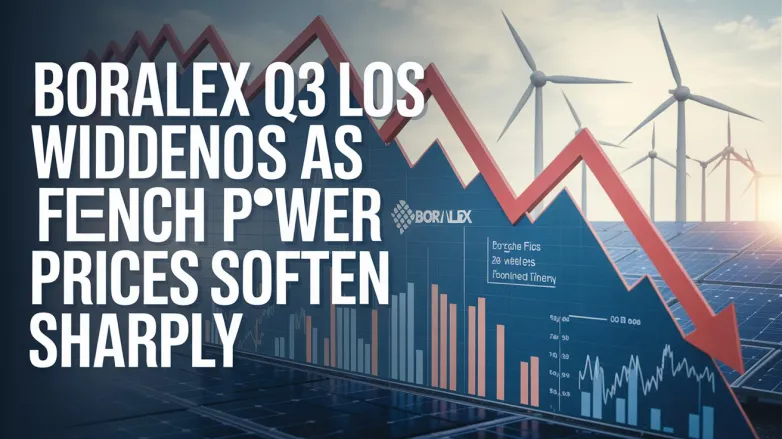Boralex Q3 loss widens as French power prices soften sharply
- Boralex’s Q3 attributable net loss doubled to CAD 27 million, as lower French market prices outweighed higher renewable output across the fleet.

Boralex reported a third-quarter attributable net loss of CAD 27 million, roughly double the year-ago figure, as a decline in French power prices more than offset higher generation across its renewable portfolio. The results highlight how merchant and quasi-merchant exposure in a key geography can dominate quarterly outcomes—even for a diversified producer.
Volumes were up, but capture rates slipped in France, where mild weather, robust nuclear availability and growing daytime renewables pushed prices lower. In such conditions, wind and solar output can rise while revenue per megawatt-hour falls, compressing gross margin. Hedging programs and contracts for difference blunt the impact, yet residual exposure still flows through earnings.
Boralex continues to push levers it can control. On the operational side, unified SCADA and fleet analytics are lifting availability basis points via predictive maintenance—thermal scans, blade inspections, IV-curve tracing—that compound over the asset life. Commercial teams are expanding corporate PPAs to lock in multi-year pricing and reduce merchant volatility, while recycling capital by selling minority stakes in mature assets to fund newbuilds with stronger returns.
Geographic mix matters. North American assets with stable offtake can buffer European swings, and adding storage to solar sites in markets with deepening “duck curves” can raise capture rates by shifting energy into evening peaks. Pipeline discipline—prioritising projects with deliverable interconnections, strong nodes and clear permitting paths—remains essential as capex and timelines come under pressure from supply chains.
The takeaway: quarterlies are noisy in power markets, and Boralex’s underlying strategy—grow contracted megawatts, improve fleet efficiency and diversify revenue with storage and corporate offtake—remains intact. But the Q3 print underlines why pricing structure and geography can overshadow raw output—and why flexible, grid-friendly assets are increasingly valuable as Europe’s generation mix evolves.
Also read

